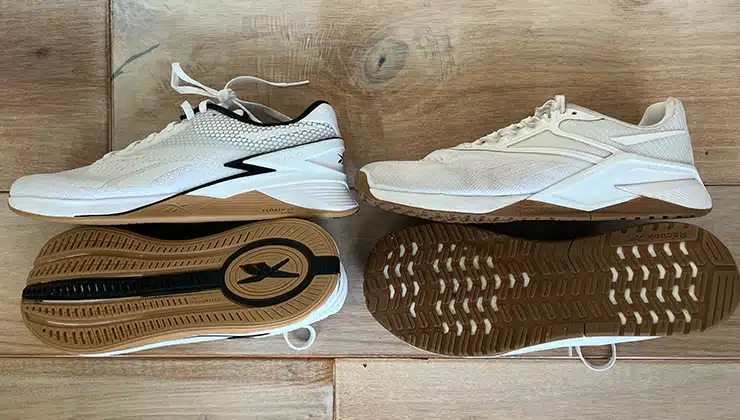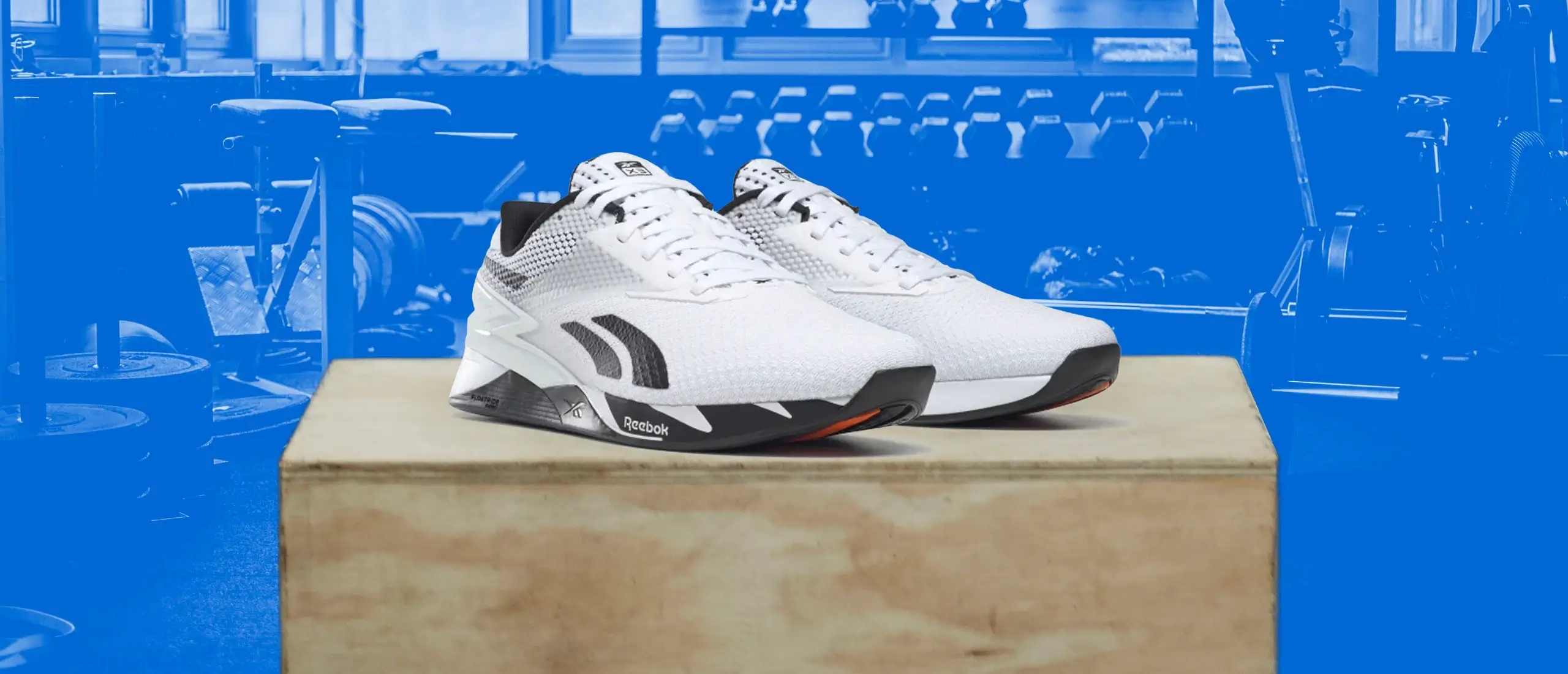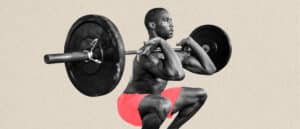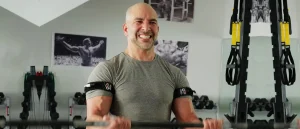Are These Cross-Training Shoes the Best Reebok Has Made Yet?
After spending the majority of my gym sessions in my trusty On Cloud X (and more embarrassingly, my current running shoe of the moment), then testing my way through Nobull trainers, Converse, and even barefoot lifting, the Reebok Nano X2s were like a breath of fresh air. Finally, a shoe as versatile as my workout routine.
I’ll give the other shoes their credit: they’re great for specific situations. But the Nanos? They’re designed to handle heavy lifting, agility work, running, and everyday wear. Which is why I reach for them nine times out of ten on my way to the gym. And also why my old X2s are looking a little worse for wear these days.
That’s why when Paul Sklar popped up on my feed sporting a fresh pair of Reebok Nano X3s, I knew it was only a matter of time before I picked up a pair. But how does the X3 stack up to its predecessor? I wore a pair through squats, deadlifts, lunges, agility work, running, and around town to put them to the test. Plus, I subbed in my old Nano X2s for a few sessions in between to get a side-by-side feel for how they compare. Here’s what you need to know.
What Are the Reebok Nano X3 Shoes?
The Reebok Nano was initially born as the official shoe of the CrossFit Games. However, after losing their partnership in 2020, Reebok has made tweaks to its design to smartly position the Nano as a catch-all training shoe—changes we saw in the Nano X, X1, and X2.
The Reebok Nano X3 enters the chat with a reworked FlexWeave upper, updated tread pattern, and all-new “Lift and Run” chassis system designed for improved versatility across multiple workout disciplines.

What’s Good About the Reebok Nano X3 Shoes?
Excels for weightlifting, HIIT, and CrossFit
Like the X2, the X3 is designed to move. Whether pushing through a heavy lift or getting after some burpees, the X3 performs. Because the shoe features more cushioning and a higher heel drop than a typical lifting shoe, it’s a solid companion for CrossFit WODs, HIIT workouts, and quick sprints and cuts. Despite these features, which aren’t necessarily ideal for lifting (many lifters prefer a flat, non-cushioned shoe) I felt stable and secure during strength workouts.
This might be due to the new “Lift and Run” chassis system—which claims to allow the heel to change its rigidity depending on your activity. It sounds equally impossible and gimmicky. Apparently, it’s neither. I found the new design to be responsive in ways the Nano X2 isn’t. A little less clunky for running, a little more reactive for multi-directional work and plyometrics, and a little more solid for lifting.
As far as grip, the outsole of the shoe provides plenty of traction. It feels slightly more grippy than my X2s—which although worn in other ways still sport an unscathed tread. I was able to hold a downward dog and power through some sprint mountain climbers on my slick wood floors with no slippage. I also love the wide toe box, which allows me to splay my toes during squats and deadlifts for more stability.
Better (but not great) for running
As someone who runs in the Hoka Mach 5 for everyday runs, and dons the Nike Vaporfly on speed days, I’ve never loved the idea of using a cross-training shoe as a runner. With my Nano X2s, I’d stick to no more than a short warmup jog and a few mid-workout sprints. My Nano X3s are no different.
I will say these shoes are slightly more suited to running than the X2s. The added cushion, heel padding, and slight forefoot bevel make it feel more active and accommodating during running than most cross-trainers. The new chassis system also makes each step feel more connected from land to take off than the X2s.
However, they’re far from my number one pick for running. Even a 15-minute warmup jog—which starts leaning towards long-distance by my standards—isn’t great. It’s at a slow pace, where boredom strikes and every ache and pain become more apparent, that you really start to notice that this is not a running shoe.
Durable and snug fit
One of my main qualms with the X2 was that the upper stretched out relatively quickly, losing a lot of the integrity and foot lockdown the shoe offered out of the box. Since it started breaking down, it’s become my go-to for casual outings rather than workouts.
The updated Flexweave upper on the X3 solves this problem. The tightly woven mesh offers more security across the foot. It also appears to be more durable to regular use, still holding its original snug fit after a month of wear.
What’s Not so Good About the Reebok Nano X3 Shoes?
Good for some athletes not so great for others
The X3 has a high heel drop of 7mm. This makes them better suited to running and agility work than standard weightlifting shoes. The steeper angle may also improve your squat range of motion if you struggle with ankle mobility. However, it may present problems during heavy lifting.
Why? They won’t feel as stable. If you’re someone who prefers training in a lower-drop shoe like the NoBull, Puma Fuse, or Converse—especially those wanting a more minimalist feel like the Vivobarefoot—the X3 won’t satisfy.
The shoe also offers a decent amount of cushion to make it a better runner. Too much cushion can take away from force production during heavy squats and deadlifts. I didn’t find that to be an issue while lifting in these shoes. However, if you lift 300-plus pounds that might be a different story.
Heel slippage
My heel slips more in the X3 than the X2. I suspect this is due to changes in the design of the heel clip. Where the X2 sports a clip that’s low in the back and bevels around the ankle, the X3 is high in the back and simply cuts straight across the ankle.
It doesn’t sound like much, but this change makes a big difference in how my foot and ankle feel, particularly during dynamic movements like speed skaters or lunges. This wasn’t necessarily detrimental to my performance, but it was noticeable. Luckily, by lacing the shoelaces through the extra eyelet at the top of the shoe I was able to increase foot lockdown, rendering this little hiccup nonexistent.
Breaking-in woes
The shoe is great out of the box for lifting; but, similar to the X2, the X3 comes rigid both in the upper and outsole. I’d like to point out that the rigid design goes to show just how sturdy this shoe is. However, this does make it feel a little clunky the first few wears, especially for agility activities and sprints. Within a few wears—and especially after the first few weeks—the shoe loosens up, making it more responsive and comfortable.
The Experience
My first experience with this shoe was a delight. Reebok took noticeable measures to improve the quality of the Nano X3 from the X2, and it shows. The shoe feels more sturdy, supportive, and comfortable—slight improvements that elevate my workout experience from sprints to lifts.
For casual wear
After needing to seriously break in the X2s, I decided to start nice and easy with the X3s. My first week of workouts was just walking around town. I wore them to the grocery store, on an evening walk, around Target, and to the mall.
I didn’t have the tibialis anterior (shin) soreness I experienced with the X2s, but who knows maybe my X2s gave me ironclad shins. This casual wear also helped me sus out the heel slippage—which I was able to fix before ever stepping foot in the gym.
For weightlifting
I rolled up to the gym ready to put these shoes to the test. Squats, deadlifts, and unilateral work like lunges, single-leg deadlifts, and step ups were on the menu.
I’ll note that I tend to lean a little more joint-friendly on strength workouts these days—opting for significantly lighter loads than my max, slow eccentrics, explosive concentrics, and moderate rep ranges. While I was nowhere near my max for this test (shame), I still had a barbell and a few plates stacked on the bar. And lifting with only a rep or two in reserve, it wasn’t easy.
I felt strong and stable through each lift. Thanks to the stiff upper and added traction to the base of the shoe my foot felt locked down during lifts, giving me the confidence to focus on my workout.
For HIIT
Next up, I headed in for some heavy dynamic work: box jumps, speed skaters, and burpees mixed into a circuit with battle ropes, pushups, and other kinds of torture.
I found during movements in the sagittal plane (straight forward and back)—like box jumps and burpees—the shoes were surprisingly dynamic. But when it came to speed skaters, there was a lot of side-to-side give. To compensate, I slowed down and focused on jumping up instead of out.
For running
I wore my X3s during a warmup jog before my weightlifting workout. At five minutes in, I felt totally fine if not a bit uncomfortable and wistful for my running shoes. At 15 minutes in, I was wishing I packed my running shoes.
After the workout, I tacked on a few sprints. Nothing crazy, just my usual 10-second build-up, 20-second all-out sprint, 90-second rest, and repeat. I definitely prefer these shoes for sprints over slow, long efforts.
The Competition
Puma Fuse
If you’re balling on a budget, consider the Puma Fuse ($90) instead. They’re great for weightlifting since they have a lower heel drop (4mm) and therefore offer more stability on heavy leg days. However, they’re not great for running, so if you want options, I’d stick with the Nano X3.
NoBull Trainers
Nobull trainers ($129) are for those who prefer a clean (boring), stylish shoe that performs. It stacks up great for weight training and CrossFit workouts but isn’t as good as the Nano for running.
Vivobarefoot Barefoot Prime
Maybe you’re looking for something a little more minimal? We tested and reviewed Vivobarefoot’s training shoe ($160) favorably, with high scores for lifting stability and, surprisingly, comfort.
The Bottom Line
Overall, the Reebok Nano X3 is a great match for weightlifting, CrossFit, HIIT, and agility workouts. It’s also decent for running, but I’d keep it short; otherwise, the dogs will be barking. If you’re looking for a worthy upgrade from the Nano X2, you’ve found it.












